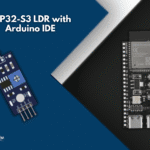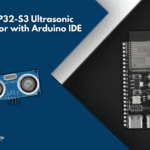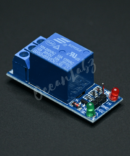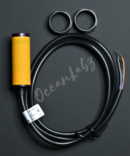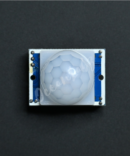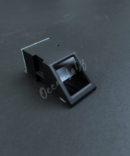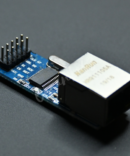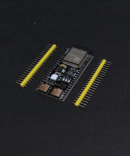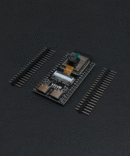Index
Introduction
The Joystick module consists of two potentiometers (X and Y axes) and a push-button switch.
It outputs analog values for movement along the X and Y axes, and a digital signal for the button press.
Commonly used in robotics, gaming, and interactive control systems.
We’ll read the analog values and detect button presses using the ESP32-S3 and Arduino IDE.
Required Components
- ESP32-S3 Board
- Joystick module
- Jumper wires
- Breadboard (optional)
Pinout
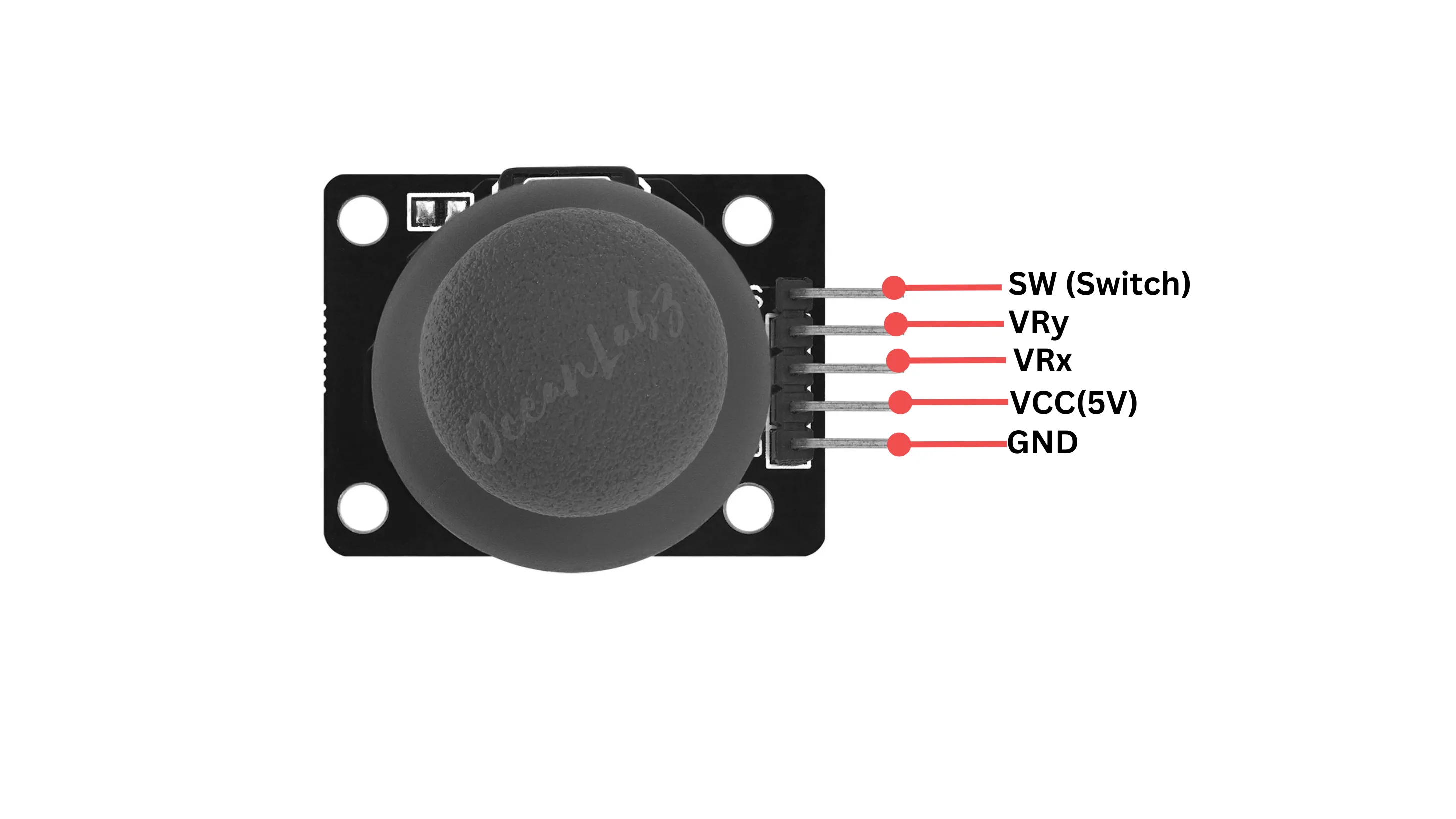
Circuit Diagram / Wiring
- Joystick (5V) → ESP32-S3 3.3
- Joystick (GND) → ESP32-S3 GND
- Joystick (VRx) → ESP32-S3 GPIO 15
- Joystick (VRy) → ESP32-S3 GPIO 16
- Joystick (SW) → ESP32-S3 GPIO 17

Code / Programming
/*
Filename: ol_joystick_read.ino
Description: Reads X and Y analog values and button state from a joystick module
Author: www.oceanlabz.in
Modification: 1/4/2025
*/
// Define pin connections
const int joyX = 15; // Analog pin for X-axis
const int joyY = 16; // Analog pin for Y-axis
const int buttonPin = 17; // Digital pin for joystick button
void setup() {
Serial.begin(115200); // Initialize serial monitor
pinMode(buttonPin, INPUT_PULLUP); // Enable internal pull-up for button
}
void loop() {
int xValue = analogRead(joyX); // Read X-axis analog value
int yValue = analogRead(joyY); // Read Y-axis analog value
int buttonState = digitalRead(buttonPin); // Read button state
Serial.print("X: ");
Serial.print(xValue);
Serial.print(" | Y: ");
Serial.print(yValue);
Serial.print(" | Button: ");
Serial.println(buttonState == LOW ? "Pressed" : "Released");
delay(300); // Short delay for stability
}
Explanation
- The joystick outputs analog signals from the X and Y axes, read using
analogRead()on ESP32-S3 ADC pins. - The built-in button outputs a digital LOW signal when pressed, read using
digitalRead(). - Commonly used for controlling direction, speed, and interactive inputs in robotics or games.
Troubleshooting
- Ensure the joystick’s VCC is connected to 3.3V, not 5V (ESP32-S3 is 3.3V logic).
- Use only ADC-compatible pins like GPIO15, 16, or 17 for analog input.
- If the button always shows “pressed”, try using
INPUT_PULLUPand check wiring to SW and GND.

